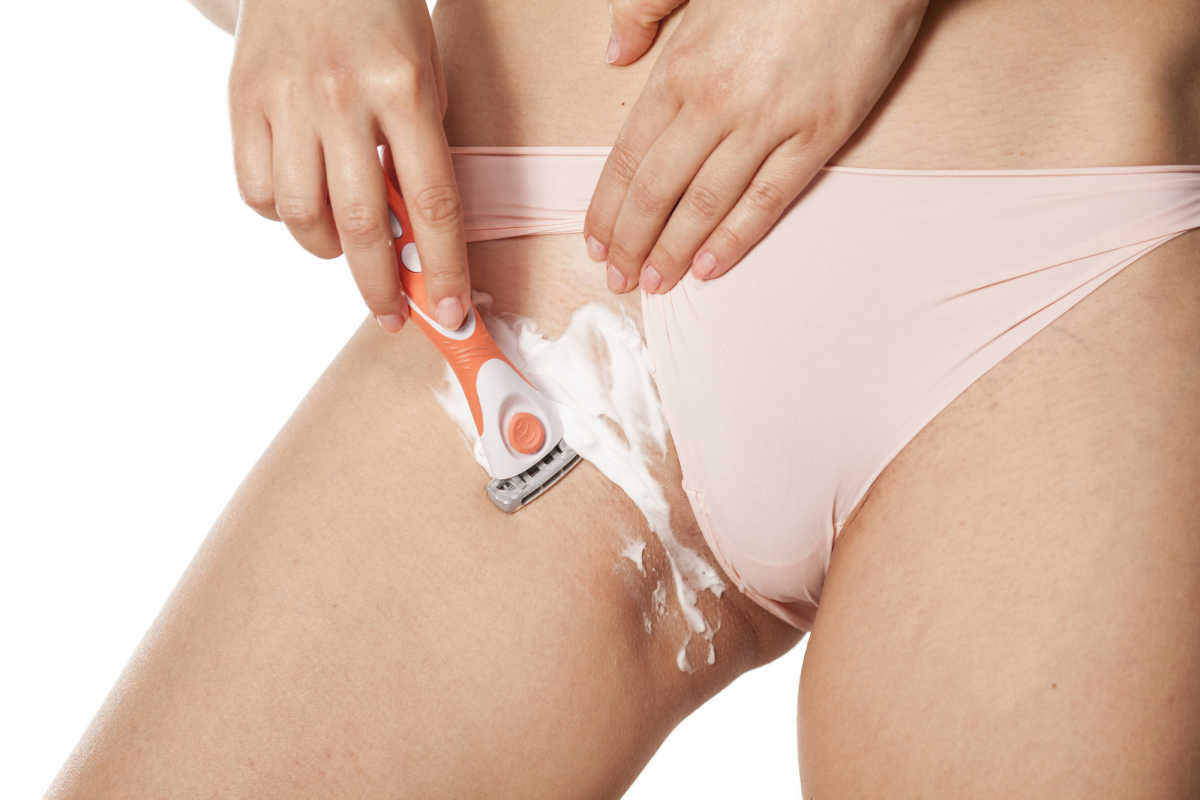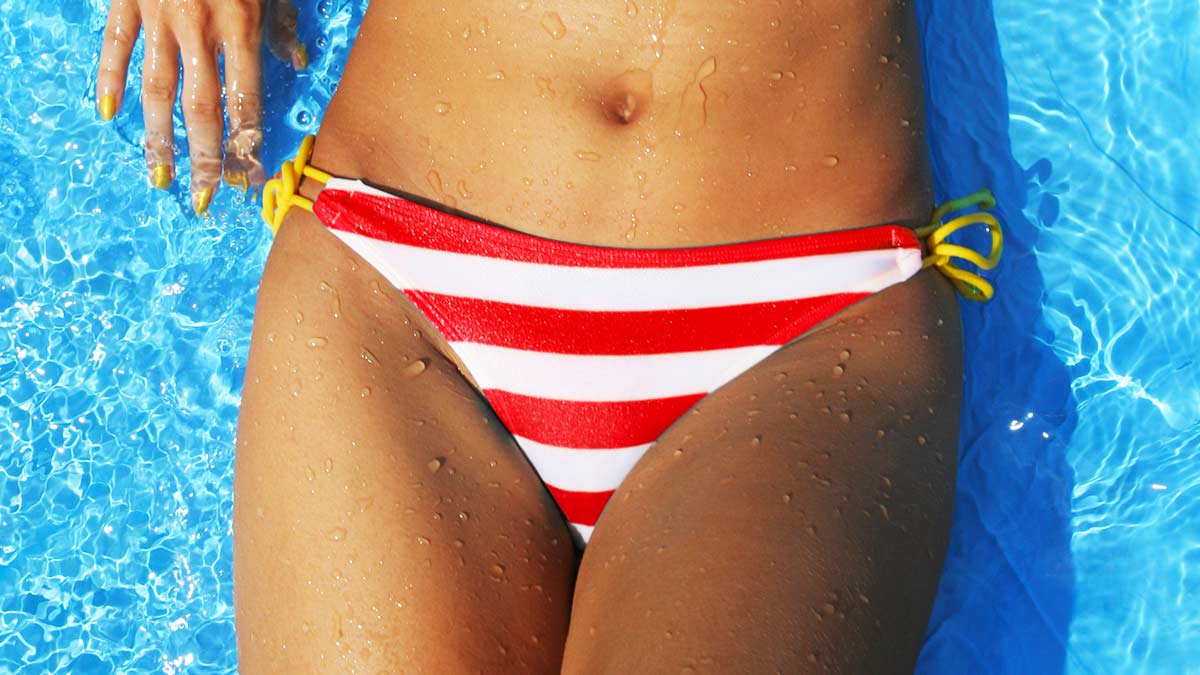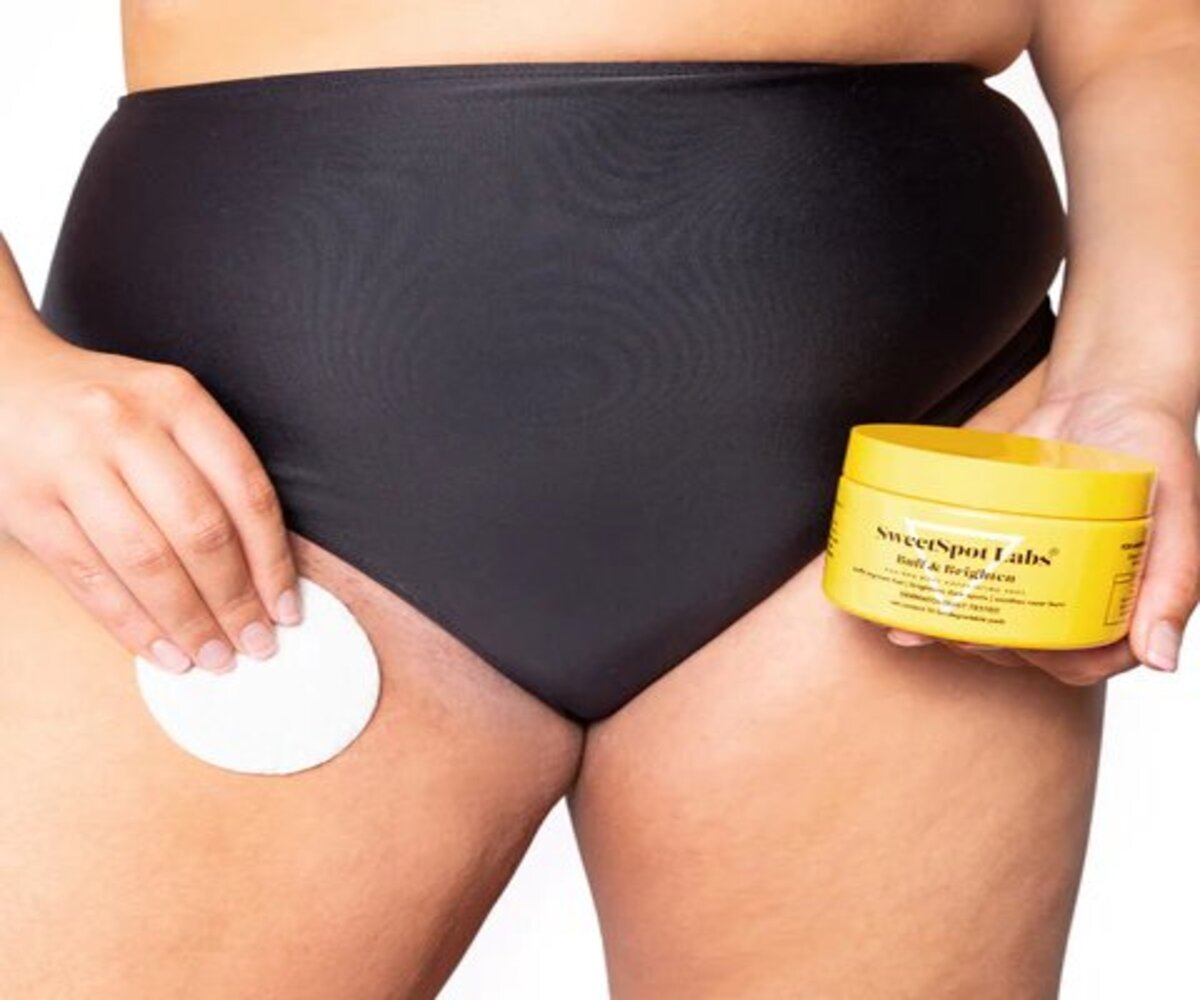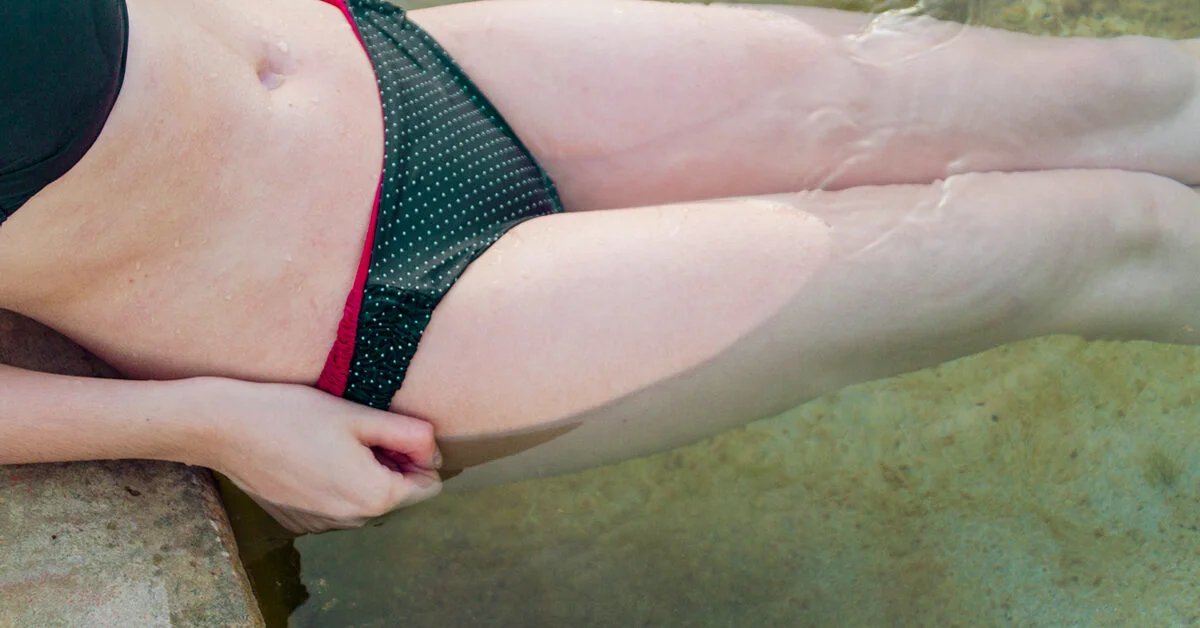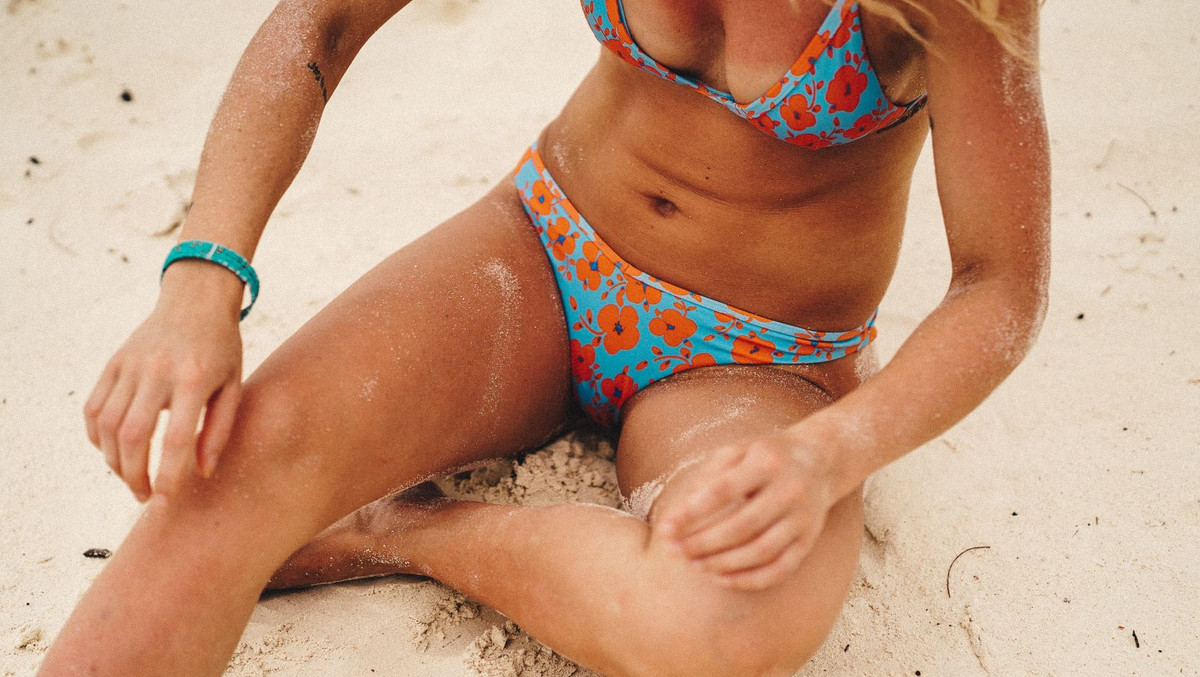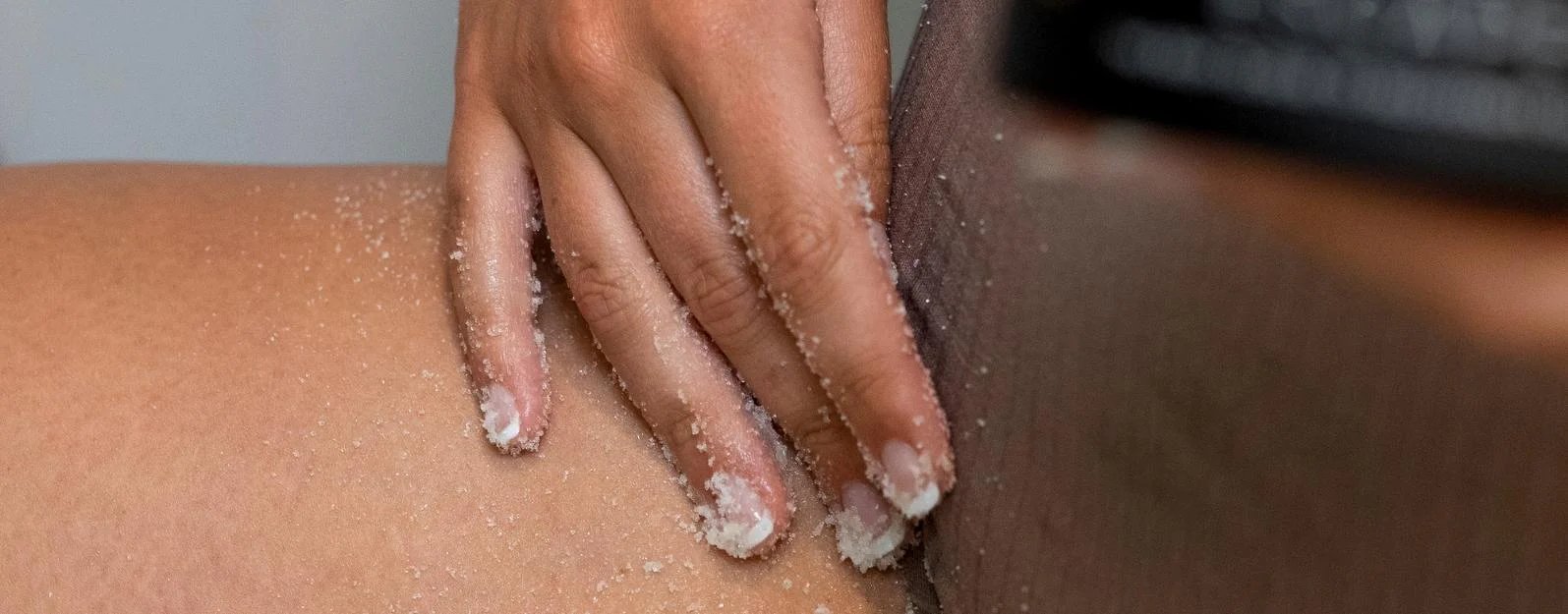Home>How-to Guides>For Women>How To Prevent Ingrown Hairs On Bikini Line


For Women
How To Prevent Ingrown Hairs On Bikini Line
Modified: August 5, 2023
Learn effective methods to prevent ingrown hairs on the bikini line. Essential tips and tricks for women to maintain smooth and irritation-free skin.
(Many of the links in this article redirect to a specific reviewed product. Your purchase of these products through affiliate links helps to generate commission for Under-tec.com, at no extra cost. Learn more)
Table of Contents
- Introduction
- Understanding Ingrown Hairs
- Causes of Ingrown Hairs on the Bikini Line
- Preparing the Bikini Line
- Exfoliating the Skin
- Choosing the Right Shaving Technique
- Using Proper Hair Removal Methods
- Maintaining Proper Hygiene
- Preventing Ingrown Hairs after Hair Removal
- Treating Existing Ingrown Hairs
- Conclusion
Introduction
Keeping your bikini line smooth and free from ingrown hairs is a common concern for many women. Whether you enjoy lounging by the pool or rocking a bikini at the beach, dealing with pesky ingrown hairs can be frustrating and uncomfortable. Fortunately, with the right knowledge and techniques, you can prevent and manage ingrown hairs on your bikini line.
Ingrown hairs occur when hair grows back into the skin instead of upward. This can lead to irritation, redness, and even infection. While anyone can experience ingrown hairs, they are particularly common in the bikini area due to the coarse texture of pubic hair and the friction caused by tight clothing or shaving.
In this article, we will explore the causes of ingrown hairs on the bikini line and provide practical tips on how to prevent them. We will also discuss proper hair removal methods, hygiene practices, and ways to treat existing ingrown hairs.
By implementing these strategies, you can enjoy a smooth and irritation-free bikini line all year round. So let’s dive in and discover how to keep your bikini line looking and feeling its best!
Understanding Ingrown Hairs
Before we delve into prevention techniques, it’s important to understand what ingrown hairs are and why they occur. An ingrown hair is a hair that curls back or grows sideways into the skin instead of growing straight out of the follicle. This can happen when the hair follicle becomes clogged with dead skin cells, oil, or bacteria.
When the hair is trapped under the surface of the skin, it can cause inflammation, redness, and the formation of small, painful bumps. Ingrown hairs can occur anywhere on the body, but they are particularly common in areas where hair is coarse and curly, such as the bikini line.
Besides its physical discomfort, ingrown hairs can also lead to aesthetic concerns. They can create blemishes, dark spots, or even scarring if not properly managed. Understanding the causes of ingrown hairs can help us take proactive steps to prevent and treat them.
So, what are some of the main causes of ingrown hairs on the bikini line? Firstly, improper hair removal techniques can be a major culprit. Shaving against the direction of hair growth, using dull razors, or pulling the skin too tight while shaving can all increase the likelihood of ingrown hairs. Additionally, excessive friction from tight clothing or harsh fabrics can irritate the skin and contribute to the development of ingrown hairs.
It’s also worth noting that certain skin types are more prone to ingrown hairs. Individuals with naturally curly or coarse hair are more likely to experience this issue. Moreover, people with oily or acne-prone skin may also have a higher risk of developing ingrown hairs.
In the next sections, we will explore ways to prevent ingrown hairs on the bikini line by addressing these causes and implementing proper hair removal techniques, maintaining good hygiene, and treating existing ingrown hairs.
Causes of Ingrown Hairs on the Bikini Line
Ingrown hairs on the bikini line can be caused by a variety of factors. Understanding these causes can help in preventing and managing ingrown hairs effectively.
1. Shaving: One of the primary causes of ingrown hairs on the bikini line is improper shaving technique. Shaving against the direction of hair growth, using dull razors, or pressing too hard can lead to ingrown hairs. When you shave, the hair that grows back can get trapped under the skin, causing irritation and inflammation.
2. Tight Clothing: Wearing tight clothing can create friction, especially in the sensitive bikini area. This friction can result in irritation and hair follicles becoming trapped under the skin, leading to ingrown hairs.
3. Razor Burn: Razor burn is a common side effect of shaving, especially in the bikini area. It occurs when the razor blade irritates the skin, causing redness, inflammation, and bumps. Razor burn can make the hair more likely to grow back into the skin, resulting in ingrown hairs.
4. Coarse, Curly Hair: People with naturally coarse and curly hair are more prone to ingrown hairs. Curly hair tends to curl back into the skin rather than growing straight out of the follicle. This can lead to ingrown hairs, particularly in the bikini area.
5. Lack of Exfoliation: Exfoliating the skin regularly helps remove dead skin cells and unclog hair follicles. When dead skin cells and debris accumulate, they can block the hair from growing out properly, causing ingrown hairs.
6. Ingrown Hair Cycle: In some cases, once an ingrown hair develops, it can lead to a cycle of more ingrown hairs. If the hair is not properly removed or if the skin is not properly cared for, ingrown hairs can persist and new ones can develop.
By understanding the causes of ingrown hairs on the bikini line, you can take proactive steps to prevent their occurrence. In the following sections, we will discuss effective techniques for preparing the bikini line, proper exfoliation methods, choosing the right shaving techniques, and using suitable hair removal methods to minimize the risk of ingrown hairs.
Preparing the Bikini Line
Properly preparing the bikini line before hair removal can help minimize the risk of ingrown hairs and ensure a smoother shaving or hair removal experience.
1. Trim the Hair: If your pubic hair is long, consider trimming it before shaving or waxing. Trimming the hair to a shorter length makes it easier to achieve a close shave and reduces the chances of hairs getting trapped under the skin.
2. Take a Warm Shower: Before hair removal, it’s beneficial to take a warm shower or bath. The warm water helps to soften the hair and open up the follicles, making it easier to remove the hair and reduce the likelihood of ingrown hairs.
3. Gentle Exfoliation: Gently exfoliating the bikini area can help remove dead skin cells and unclog the hair follicles. Use a mild exfoliating scrub or a soft brush to gently scrub the area in circular motions. This can help lift any trapped hairs and reduce the chances of them growing back into the skin.
4. Use a Clean Razor: If you prefer shaving, make sure to use a clean and sharp razor specifically designed for sensitive areas. A dull or dirty razor can increase the risk of ingrown hairs and irritation. Consider using a new razor blade or replacing the blade regularly to ensure a smooth and clean shave.
5. Apply a Lubricating Shaving Gel: Before shaving, apply a layer of a lubricating shaving gel or foam to the bikini area. This helps to create a barrier between the razor and the skin, reducing friction and irritation during the shaving process. Avoid using soap, as it can dry out the skin and increase the chances of ingrown hairs.
6. Shave in the Direction of Hair Growth: When shaving the bikini line, it’s important to shave in the direction of hair growth. Shaving against the grain can cause the hair to be cut too short and increase the risk of ingrown hairs. Take your time and use light, gentle strokes to achieve a close but comfortable shave.
By following these preparatory steps, you can set yourself up for a successful hair removal session with reduced chances of ingrown hairs. In the next sections, we will explore techniques for exfoliating the skin, choosing the right shaving techniques, and using proper hair removal methods to further prevent ingrown hairs on the bikini line.
Exfoliating the Skin
Exfoliating the skin regularly is a crucial step in preventing ingrown hairs on the bikini line. By removing dead skin cells and unclogging hair follicles, exfoliation promotes smoother hair growth and reduces the likelihood of hairs getting trapped under the skin. Here are some tips for effective exfoliation:
1. Choose the Right Exfoliator: Opt for a gentle exfoliating product specifically designed for the bikini area. Avoid using harsh scrubs or loofahs, as they can irritate the delicate skin in that region. Look for exfoliators that contain ingredients like salicylic acid or glycolic acid, which help to unclog pores and reduce inflammation.
2. Exfoliate Before Hair Removal: It’s best to exfoliate the bikini area a day or two before hair removal. This allows time for the skin to recover and reduces the risk of irritation after hair removal. Exfoliating in the shower or bath is ideal, as the warm water helps to soften the skin and make exfoliation easier.
3. Gently Exfoliate in Circular Motions: Using gentle circular motions, massage the exfoliator onto the bikini area. Avoid scrubbing too vigorously, as this can cause irritation. Focus on areas where ingrown hairs are more likely to occur, such as the groin, bikini line, and upper thighs.
4. Rinse Thoroughly: After exfoliating, rinse off the product thoroughly with warm water. Make sure to remove any residue to prevent clogging of the hair follicles. Pat the bikini area dry with a clean towel, being careful not to rub the skin harshly.
5. Moisturize: After exfoliating, it’s essential to moisturize the bikini area to keep the skin hydrated and supple. Choose a gentle, fragrance-free moisturizer specifically formulated for sensitive skin. Moisturizing helps to maintain the skin’s barrier function and reduces the risk of dryness and irritation.
6. Exfoliate Regularly: For the best results, incorporate regular exfoliation into your skincare routine. Aim to exfoliate the bikini area once or twice a week, depending on your skin’s sensitivity. Over-exfoliating can lead to skin irritation, so it’s important to find the right balance for your skin.
By incorporating regular exfoliation into your skincare routine, you can help prevent ingrown hairs and promote smoother, healthier skin in the bikini area. In the following sections, we will explore techniques for choosing the right shaving technique, using proper hair removal methods, and maintaining proper hygiene to further prevent ingrown hairs on the bikini line.
Choosing the Right Shaving Technique
When it comes to preventing ingrown hairs on the bikini line, choosing the right shaving technique is crucial. By following these guidelines, you can achieve a close shave while minimizing the risk of ingrown hairs and irritation:
1. Prepare the Skin: Before shaving, make sure to properly prepare the skin by taking a warm shower or bath. The warm water helps to soften the hair and open up the hair follicles, making it easier to achieve a smooth shave.
2. Use a Clean and Sharp Razor: Always use a clean and sharp razor specifically designed for the bikini area. A dull or dirty razor can cause irritation and increase the risk of ingrown hairs. Consider using a new razor blade or replacing the blade regularly.
3. Apply a Lubricating Shaving Cream or Gel: Before shaving, apply a generous amount of a lubricating shaving cream or gel to the bikini area. This helps to create a barrier between the razor and the skin, reducing friction and irritation. Avoid using soap, as it can dry out the skin and increase the chances of ingrown hairs.
4. Shave in the Direction of Hair Growth: Shave in the same direction as the hair growth to minimize the risk of ingrown hairs. Shaving against the grain can cause the hair to be cut too short and increase the likelihood of it growing back into the skin. Take your time and use light, gentle strokes for a close but comfortable shave.
5. Rinse the Razor Frequently: Rinse the razor blade frequently while shaving to remove any hair buildup. This ensures a smoother shave and reduces the chances of clogged follicles and ingrown hairs.
6. Avoid Pressing Too Hard: Avoid applying excessive pressure while shaving. Pressing too hard can irritate the skin and increase the likelihood of ingrown hairs. Let the razor glide gently over the skin without applying too much force.
7. Moisturize After Shaving: After shaving, rinse the bikini area with cool water to soothe the skin and close the hair follicles. Pat the skin dry with a clean towel and apply a moisturizer to keep the skin hydrated and reduce dryness and irritation.
By following these tips for choosing the right shaving technique, you can achieve a smooth and comfortable shave while minimizing the risk of ingrown hairs on the bikini line. In the next sections, we will explore hair removal methods other than shaving and discuss proper hygiene practices to further prevent ingrown hairs.
Using Proper Hair Removal Methods
Aside from shaving, there are various hair removal methods available that can help prevent ingrown hairs on the bikini line. Here are some alternatives to shaving and tips for using these methods effectively:
1. Waxing: Waxing is a popular hair removal method that pulls the hair out from the root. This can help reduce the likelihood of ingrown hairs. When waxing, make sure to follow the instructions carefully and consider seeking professional help for best results. Waxing should be done in the direction of hair growth, and the skin should be held taut to minimize discomfort.
2. Depilatory Creams: Depilatory creams contain chemicals that dissolve hair at the surface. These creams can be an effective alternative to shaving, as the hair often grows back finer. However, it’s important to do a patch test and follow the instructions provided. Avoid leaving the cream on for too long, as it can cause irritation.
3. Epilators: Epilators are devices that remove hair by plucking them from the root. This method can provide longer-lasting results compared to shaving. When using an epilator, hold the skin taut and move the device in the direction of hair growth to minimize discomfort and reduce the risk of ingrown hairs.
4. Laser Hair Removal: Laser hair removal offers a more semi-permanent solution to reduce hair growth. This method uses targeted laser beams to damage the hair follicles, inhibiting further growth. Laser hair removal should be conducted by a trained professional to ensure safety and efficiency.
5. Sugaring: Sugaring is an ancient hair removal technique that involves using a sticky paste made of sugar, lemon juice, and water to remove hair from the root. Similar to waxing, sugaring can help prevent ingrown hairs by removing hair from the root. It’s advisable to seek professional help or follow a reputable recipe when attempting sugaring at home.
Whatever hair removal method you choose, it’s essential to exfoliate regularly and moisturize the bikini area to prevent ingrown hairs and maintain smooth, healthy skin. In the next sections, we will discuss the importance of maintaining proper hygiene and share tips for preventing ingrown hairs after hair removal.
Maintaining Proper Hygiene
Proper hygiene plays a crucial role in preventing ingrown hairs on the bikini line. By incorporating these hygiene practices into your routine, you can keep your skin clean, reduce the risk of irritation, and minimize the chances of ingrown hairs:
1. Cleanse Regularly: Gently cleanse the bikini area daily to remove sweat, excess oil, and bacteria. Use a mild, fragrance-free cleanser specifically formulated for sensitive skin. Avoid using harsh soaps or scrubs, as they can strip the skin of its natural oils and cause dryness or irritation.
2. Avoid Harsh Products: Be mindful of the products you use on your bikini area. Avoid using heavily scented products, as they can irritate the skin. Keep in mind that certain products, such as harsh exfoliators or alcohol-based toners, can also lead to dryness and sensitivity.
3. Wear Breathable Fabrics: Opt for breathable, moisture-wicking fabrics for your underwear and swimsuits. Fabrics like cotton allow for better airflow and reduce the chances of irritation and ingrown hairs caused by friction. Avoid wearing tight-fitting clothing for extended periods, as it can promote ingrown hairs.
4. Change Out of Wet Clothes: After swimming or exercising, change out of wet clothes promptly, as prolonged moisture can create a breeding ground for bacteria and increase the chances of ingrown hairs. Damp, sweaty skin is more prone to irritation and inflammation.
5. Avoid Touching or Picking: Resist the temptation to touch or pick at the bikini area. This can introduce bacteria and irritate the skin, making it more prone to ingrown hairs and infection. If you notice any ingrown hairs, resist the urge to pluck them out and instead follow proper treatment methods.
6. Launder Undergarments Properly: Ensure that your underwear and swimsuits are properly cleaned. Wash them with a gentle, fragrance-free detergent and avoid fabric softeners, as they can leave residue on the fabric and irritate the skin. Wash them in lukewarm water and allow them to air dry to prevent additional irritation from heat and friction.
Maintaining proper hygiene is essential in preventing ingrown hairs on the bikini line. By incorporating these practices into your routine, you can keep your skin clean, healthy, and free from irritation. In the next sections, we will explore techniques for preventing ingrown hairs after hair removal and discuss methods to treat existing ingrown hairs.
Preventing Ingrown Hairs after Hair Removal
After hair removal, whether through shaving, waxing, or another method, it’s important to take proper steps to prevent ingrown hairs from developing. By following these tips, you can minimize the chances of ingrown hairs and maintain a smooth, irritation-free bikini line:
1. Exfoliate Regularly: Continue with regular exfoliation to prevent dead skin cells from accumulating and clogging hair follicles. This helps to promote proper hair regrowth and reduces the risk of ingrown hairs. Use a gentle scrub or exfoliating mitt to gently exfoliate the bikini area once or twice a week.
2. Moisturize Daily: Keep the skin well-hydrated by moisturizing the bikini area daily. Use a gentle, fragrance-free moisturizer to soothe the skin and maintain its elasticity. Well-moisturized skin is less prone to dryness and irritation, which can contribute to the development of ingrown hairs.
3. Avoid Tight Clothing: Opt for loose-fitting, breathable clothing to prevent friction and irritation on the bikini line. Tight clothing can trap sweat and bacteria, leading to inflammation and ingrown hairs. Give your skin space to breathe and minimize unnecessary friction.
4. Don’t Overuse Hair-Removal Methods: Avoid excessive or frequent hair removal in the same area, as this can increase the risk of ingrown hairs. Give your skin time to heal and allow the hair to grow to a sufficient length before attempting another hair removal session.
5. Be Gentle: Treat the bikini area with care and avoid harsh scrubbing or excessive rubbing. Aggressive scrubbing can cause irritation and disrupt the hair follicles, leading to ingrown hairs. When drying the area, pat gently with a clean towel instead of rubbing vigorously.
6. Avoid Sun Exposure: Limit sun exposure on the freshly treated bikini area, as UV rays can increase sensitivity and potentially lead to irritation. If you must be in the sun, apply sunscreen with a high SPF specifically formulated for sensitive skin to protect the area.
By following these preventive measures, you can reduce the chances of ingrown hairs and maintain a smooth bikini line. However, if you do notice any ingrown hairs, it’s important to treat them promptly to prevent further complications. In the next section, we will discuss effective techniques for treating existing ingrown hairs.
Treating Existing Ingrown Hairs
If you have existing ingrown hairs on your bikini line, don’t fret. There are several effective techniques to treat them and alleviate any discomfort or irritation. Here are some methods you can try:
1. Warm Compresses: Apply a warm compress to the affected area for a few minutes to help soothe the skin and soften the hair follicles. This can help encourage the hair to come to the surface, making it easier to remove.
2. Gentle Exfoliation: Gently exfoliate the affected area using a soft brush or a gentle scrub to help remove dead skin cells and free the trapped hair. Be careful not to scrub too harshly, as it can further irritate the skin.
3. Use Tweezers: If the ingrown hair is close to the surface, you can carefully use sterilized tweezers to gently lift the hair out. Make sure to disinfect the tweezers with alcohol before and after use to prevent infection.
4. Avoid Picking: Refrain from picking or squeezing at the ingrown hair, as this can lead to further inflammation and potential infection. Allow the hair to naturally resurface or use proper methods for extraction.
5. Topical Treatments: Apply over-the-counter creams or serums containing ingredients such as salicylic acid or tea tree oil. These products can help reduce inflammation, unclog pores, and promote healing. Follow the instructions on the packaging for best results.
6. Professional Assistance: If the ingrown hair is persistent, painful, or shows signs of infection, it’s advisable to seek professional help. A dermatologist or esthetician can provide advanced treatment options, such as chemical peels or laser therapy, to help remove the ingrown hair and prevent future occurrences.
Remember to be patient when treating ingrown hairs. It may take some time for the hair to come out or for the area to heal. If the condition worsens or doesn’t improve, consult a healthcare professional for further guidance.
By following these techniques, you can effectively treat existing ingrown hairs and prevent further complications. With consistent care and proper hair removal methods, you can enjoy a smooth and bump-free bikini line.
Conclusion
Maintaining a smooth and ingrown hair-free bikini line doesn’t have to be a daunting task. By understanding the causes of ingrown hairs and implementing proper techniques, you can prevent their occurrence and keep your skin looking and feeling its best.
Start by preparing the bikini line before hair removal, trimming the hair, and exfoliating the skin to ensure a smooth and irritation-free process. Choose the right shaving technique, using a clean razor, shaving in the direction of hair growth, and avoiding excessive pressure.
Explore alternative hair removal methods such as waxing, depilatory creams, or sugaring, and use them correctly to minimize the risk of ingrown hairs. Maintain proper hygiene, cleanse regularly, wear breathable fabrics, and avoid touching or picking at the bikini area.
If ingrown hairs do occur, treat them gently with warm compresses, exfoliation, and topical treatments. Seek professional assistance if needed, especially if there are signs of infection or persistent ingrown hairs.
By incorporating these practices into your routine, you can achieve and maintain a smooth, bump-free bikini line. Remember, every individual’s skin is unique, so it may take some experimentation to find the best method that works for you.
Don’t let the fear of ingrown hairs hold you back from enjoying your time at the pool or beach. Embrace these techniques, take care of your skin, and confidently rock your favorite bikini with a smooth and ingrown hair-free bikini line.
